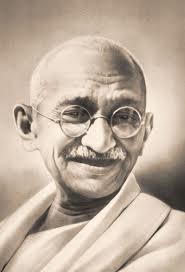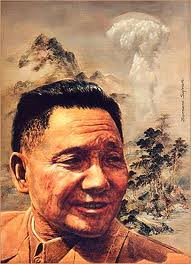India's Achilles heel: the Gandhian/Jeffersonian ideal
 Saturday, February 12, 2011 at 10:30AM
Saturday, February 12, 2011 at 10:30AM  versus
versus
Gandhi reified the village as the center of Indian life. There you find the ones left behind in the rapture that is globalization's narrow advance into "shining India." Gandhi is the modern Jefferson, and he shows you just how wrong that guy was.
Western investors may take eager note of India’s economic growth rate of nearly 9 percent a year. But that statistic rings hollow in India’s vast rural areas. Agriculture employs more than half the population, but it accounts for only 15 percent of the economy — and it has grown an average of only about 3 percent in recent years.
Critics say Indian policy makers have failed to follow up on the country’s investments in agricultural technology of the 1960s and ’70s, as they focused on more glamorous, urban industries like information technology, financial services and construction.
There is no agribusiness of the type known in the United States, with highly mechanized farms growing thousands of acres of food crops, because Indian laws and customs bar corporations from farming land directly for food crops. The laws also make it difficult to assemble large land holdings.
Yet even as India’s farming still depends on manual labor and the age-old vicissitudes of nature, demand for food has continued to rise — because of a growing population and rising incomes, especially in the middle and upper classes. As a result, India is importing ever greater amounts of some staples like beans and lentils (up 157 percent from 2004 to 2009) and cooking oil (up 68 percent in the same period).
Food prices are rising faster in India than in almost any other major economy — and faster than they did during the 2007-8 surge.
The whole India-v-China model is a fascinating experiment in Jefferson versus Hamilton, or Gandhi versus Deng. It's not a state capitalism versus market thing, because the ratios there aren't all that different. It's really a question of whether you like cities and industry versus villages and agriculture.










Reader Comments (1)
Watching Hans Rosling videos I was fascinated by the gaps that are starting to appear between the sick and poor and the wealthy and healthy in the same developing or emerging states.Australia is no different, the gap between Sydney and the Torres Strait could not be more pronounced, economic, life expectancy, health it s all a stark divide.